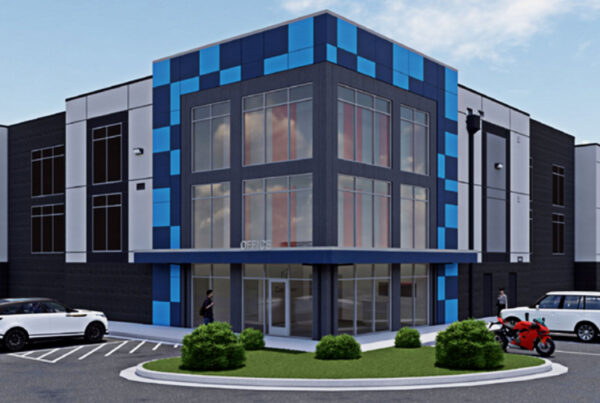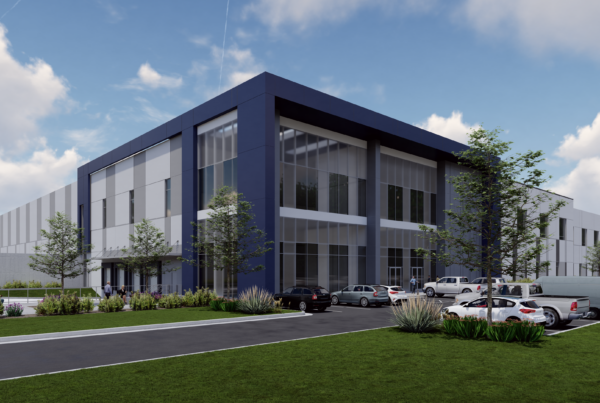Due to its numerous benefits, design-build has become a popular project delivery method in the construction industry. The method combines a project’s building design and construction under a single contract. This approach offers clients a seamless experience from start to finish while ensuring that projects get completed on time, within budget, and according to specifications.
ARCO Design-Build provides design-build services in cities across America. As a leader in industrial design and industrial engineering, we’ve seen how the single contract approach to design-build construction can outperform more traditional construction contract models.
We created this guide to lay out everything you need to know about design-build, including the steps in the process and the benefits it provides over traditional construction. We also cover choosing the right design-build firm and the future of design-build in the construction industry.
The Origins Of Design-Build
Design-build has been around for centuries, with its origins tracing back to the Egyptian and Greek eras. During these times, the master builder oversaw project design, engineering, and construction. This approach was ingrained in the construction industry until the Renaissance era when specialization became popular. Architects, engineers, and contractors became professionals in their respective fields, creating a chasm in the construction process.
The modern design-build method traces its roots to the United States in the 1950s. The first-ever design-build project was the construction of the Ft. Belvoir Hospital in Virginia, completed in 1954. This project was a collaboration between the U.S. Army Corps of Engineers and a private firm, Bliss & Nyitray Inc.
The Growth Of Design-Build In The Construction Industry
The design-build method continues to grow in popularity. Design-build projects have increased by about 50% in the last ten years. According to the Design-Build Institute of America (DBIA), more than 44% of construction projects in the U.S. are design-build projects.
The rise in popularity should be no surprise when considering the benefits of design-build over traditional construction. The design-build method reduces risks for the client and ensures that projects get completed faster than traditional construction methods. Design-build reduced surprises or hidden costs. It minimizes errors and overruns. Design-build ensures proper materials and techniques to meet the client’s specifications.
The Design-Build Process
The design-build process is a project delivery method that involves designing and constructing a project under a single contract. It is a collaborative approach that consists of the client, design-build team, and other stakeholders working together from start to finish to ensure project success.
The Basic Design-Build Process Consists of Four Steps
The design-build process can include various moving parts and departments working together simultaneously. The specifics of each project will depend on the needs of the client. However, all design-build projects include the following essential steps:
1. Pre-Design
The pre-design stage involves the client and design-build team working together to identify the project’s scope, goals, budget, and timelines. Preconstruction services can include things like project financing, procurement methods, and performance specifications. The pre-design step defines the project’s parameters and sets it up for success.
2. Design
In the design phase, the design professionals on the design-build team creates a design that meets all building codes and engineering design recommendations. Some contractors may make digital designs that can include building information modeling. The design step ensures that the project meets the client’s needs, specifications, and budget as the construction begins.
3. Construction
During construction, the design-build team manages the construction process. It works within the parameters set out in the pre-design phase and consults the designers to ensure the use of all the specified methods and materials. The construction step creates the building and plays a critical role in ensuring projects proceed on time and within budget.
4. Post-Construction
Post-construction involves the design-build team conducting a post-construction review to ensure the project meets the client’s needs, specifications, and quality standards. This final step assures all the other steps were done correctly and up to the necessary quality.
Each step of the design-build process benefits the client, and the design-build process as a whole amplifies those benefits. Any step in the process could determine a necessary change. The design-build process gives you the most agile form of change order management because it can happen in real time while maintaining consistent communication with all parties involved.
Benefits of Design-Build
With the value of each step of the design-build process laid out in the section above, let’s look at how the design-build process itself can provide value to clients.
Single Point of Responsibility
With the design-build model, a single company manages all the architectural design, construction contracts, general contractors, and subcontractors. Doing so allows the design-build model to provide design and construction preparations simultaneously and with open communication. The integration of the design-to-build process gives the method an advantage over other construction management methods.
Time Savings
The design-build method ensures faster project completion than traditional construction methods. By designing and constructing the building concurrently, the design-build method reduces the time it takes to complete a project.
Cost Savings
Design-build reduces surprises and hidden costs. The entire project gets completed under a single contract, reducing the chances of budget overruns, change orders, and other unforeseen expenses.
Quality Control
With design-build, a single team completes the project, minimizing miscommunication, errors, and conflicts. That ensures that the construction crews use the proper materials and techniques and that the final product meets the client’s needs and specifications.
Collaboration
The design-build method fosters team collaboration by keeping everyone working toward the same goal. That ensures that each team member brings their expertise to the project, resulting in a better outcome.
Risk Management
With design-build, the client transfers the risk to the design-build team, reducing the client’s exposure to risks such as delays, defects, and budget overruns.
Design-Build vs. Traditional Construction
Traditional construction involves dividing the project into separate stages, with each stage of the project management completed by a different team or contractor. On the other hand, design-build involves completing the project under a single contract with a team that includes the designer and the contractor.
Since traditional construction methods involve several companies, each operating on its own timeline, any change or surprise during any phase of the project can lead to unpredictable delays. Everyone in construction knows unforeseen changes happen in every project. So every project done using traditional construction methods has considerable potential for delay. Coordinating across multiple companies, each looking at its own bottom line, can also lead to miscommunications or, worse, confrontations.
The design-build method eliminates these problems by letting one company handle the whole process—one company with a consistent timeline and singular goal.
How to Choose the Right Design-Build Firm
When choosing a design-build firm, there are several factors to consider.
Choose a design-build firm with experience and a track record of successful projects. It should also have a reputation for high-quality customer service. A reliable design build firm displays expertise, excellent communication skills, acute attention to detail, and utmost professionalism. So, how do you know if a design-build contractor has these attributes? Ask.
Questions to Ask a Potential Design-Build Firm
Get the information you need to select the right design-build firm for your project. Don’t be afraid to ask the following questions:
- What is your experience in design-build projects?
- What is your process for designing and building projects?
- What sets your firm apart from others?
- Can you provide references for your work?
- How do you handle unexpected changes or challenges during a project?
The answers to these questions will guide you to a reliable design-build company like ARCO Design/Build.
Get Started on Your Design-Build Project.
Design-build is a project delivery method that combines the designing and construction of a project under a single contract. Its collaborative approach ensures a project’s success by involving the client, design-build team, and other stakeholders from start to finish.
Design-build is a growing trend in the construction industry as more clients recognize the benefits of this approach. A design-build firm can offer clients a more efficient, cost-effective, and collaborative construction process, resulting in a successful project outcome.
Choose ARCO Design/Build for Your Next Design-Build Project
ARCO Design/Build is a top-rated design-build firm that offers quality services and exceptional customer service. Contact us today to learn more about our services or start your next design-build project.
Contact ARCO Design/Build Today to Get Started!
Design-Build FAQs
What is design-build?
Design-build is a construction approach in which a single entity, the design-build firm, handles the project management, design, and construction. That means the client only needs to work with one contractor for the entire process instead of hiring separate architects, engineers, and contractors.
What is industrial construction?
Industrial construction refers to constructing buildings, facilities, and infrastructure for industries such as manufacturing, energy, and transportation. It typically involves large-scale construction projects and requires specialized knowledge and skills.
What is design-bid-build?
Design-bid-build is a traditional construction approach in which a project’s design and construction phases are completed separately. The client first hires an architect or engineer to design the project and then puts the design out to bid to contractors, who will then build it. This approach can result in longer timelines and potential communication breakdowns between the designer and the builder.
What is a design-build contract?
A design-build contract is a type of construction contract in which the design and construction services are provided by the same entity – the design-build firm. This type of contract is often used in larger, more complex projects and can include specific performance requirements, project milestones, and payment schedules.
Why design-build?
There are several reasons why a client might choose a design-build approach for their construction project. Some of the benefits include:
- Cost savings
- Single point of contact & responsibility for owners
- Streamlined process
- Increased teamwork
- Turnkey project delivery
- Unified construction outcomes from initial concept through project completion


